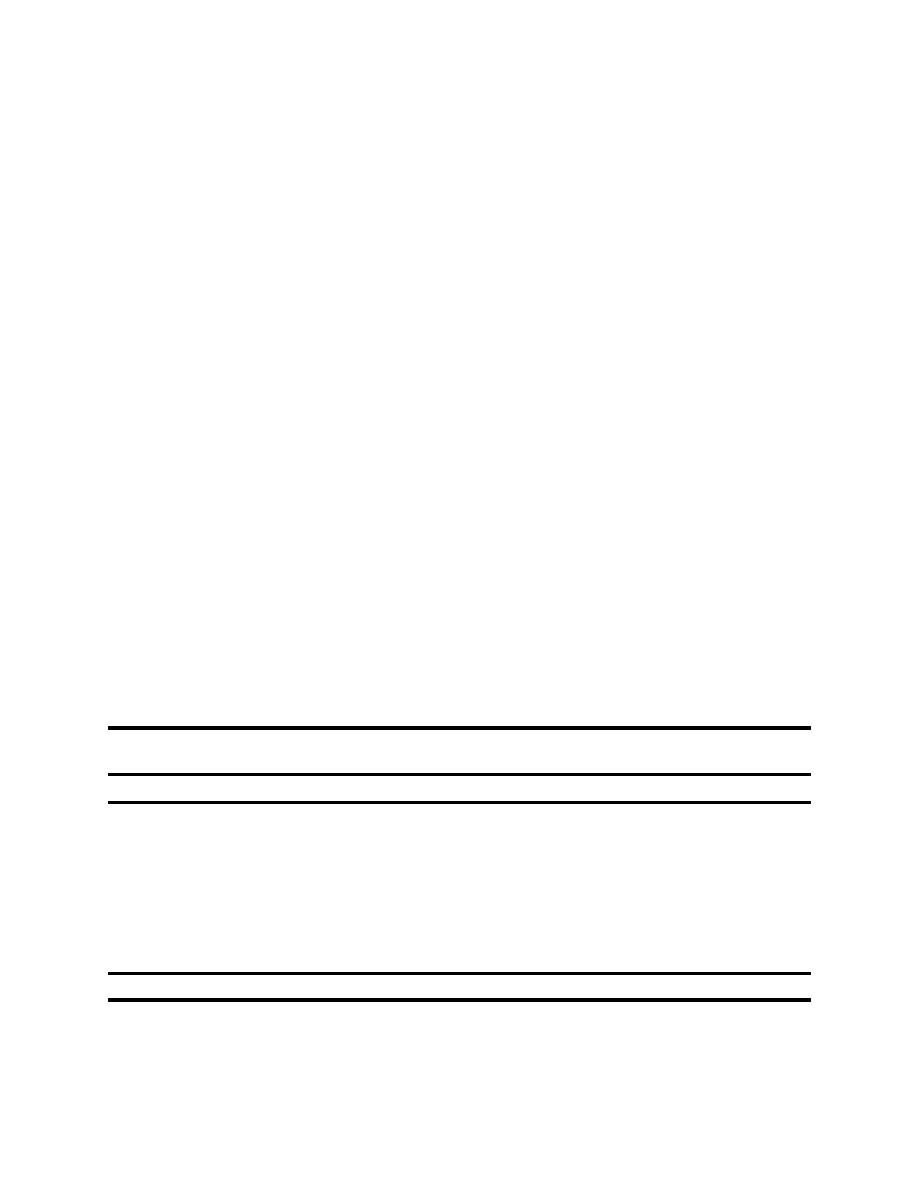
UFC 3-260-02
30 June 2001
subgrade in frost areas will not be considered part of the layered system of the airfield, which should be
comprised of only the wearing, base, and subbase courses.
(g) Base Course and Filter Layer. Relative thicknesses of the base course and filter
layer vary, and should be based on the required cover and economic considerations.
(h) Alternate Design. The reduced subgrade strength design provides a soil thickness
above a frost-susceptible subgrade which minimizes frost heave. For a more economical design, a frost-
susceptible select material or subbase may be used as a part of the total thickness above the frost-
susceptible subgrade. However, thickness above the select material or subbase must be determined by
using the FASSI of the select or subbase material. Frost-susceptible soils used as select materials or
subbases must meet current specifications; the restriction on the allowable percent finer than 0.02 mm is
waived.
(4) Surface Course. Materials requirements for construction of aggregate surfaced airfields
depend upon whether frost is a factor in the design.
(a) Nonfrost Areas. Material used for airfields should be sufficiently cohesive to resist
abrasive action. It should have a liquid limit no greater than 35 and a plasticity index between 4 and 9. It
also should be graded for maximum density and minimum volume of voids to enhance optimum moisture
retention while resisting excessive water intrusion. Gradation should consist of an optimal combination
of coarse and fine aggregates to ensure minimum void ratios and maximum density. This material will
exhibit cohesive strength as well as intergranular shear strength. Recommended gradations are shown
in Table 3-6. If the fines fraction of the material does not meet plasticity characteristics, the material may
be modified by adding chemicals. Chloride products can, in some cases, enhance moisture retention,
and lime can be used to reduce excessive plasticity.
(b) Frost Areas. Where frost is a consideration, a layered system should be used. The
percentage of fines should be restricted in all the layers to facilitate drainage and reduce the loss of
stability and strength during thaw periods. Use gradation numbers 3 and 4 shown in Table 3-6 with
caution, since they may be unstable in a freeze-thaw environment.
Table 3-6
Gradation for Aggregate Surface Courses (Percent Passing)
Sieve Designation
No. 1
No. 2
No. 3
No.4
25.0 mm (1")
100
100
100
100
9.5 mm (3/8")
50-85
60-100
--
--
No. 4
35-65
50-85
55-100
70-100
No. 10
25.50
40.70
40-100
55-100
No. 40
15.30
24-45
20-50
30-70
No. 200
8-15
8-15
8-15
8-15
Note: The percent by weight finer than 0.02 mm (0.04 in.) shall not exceed 3 percent.
3-10



 Previous Page
Previous Page
